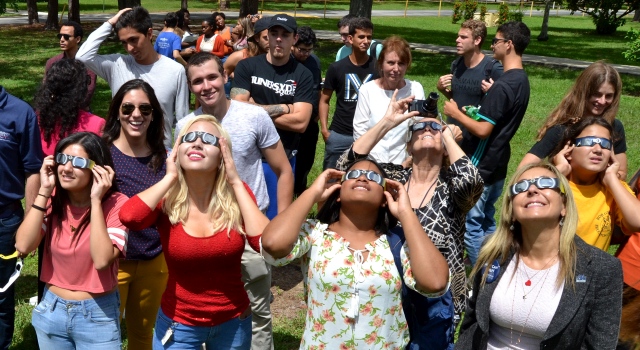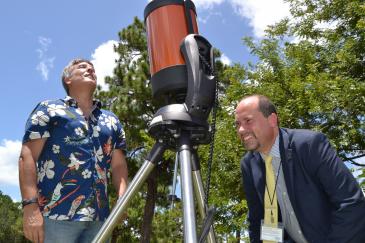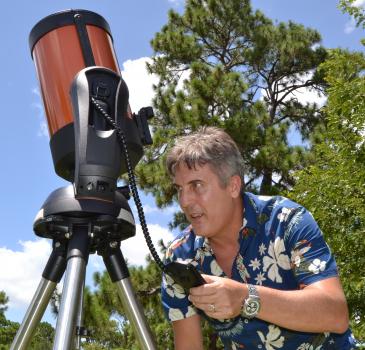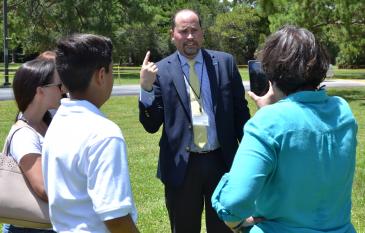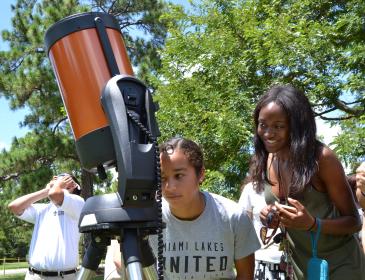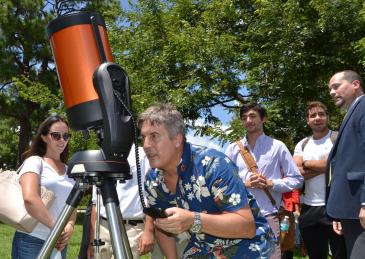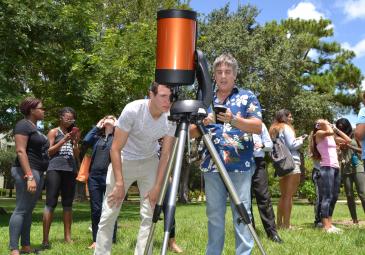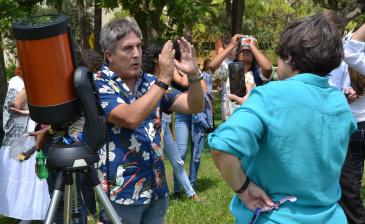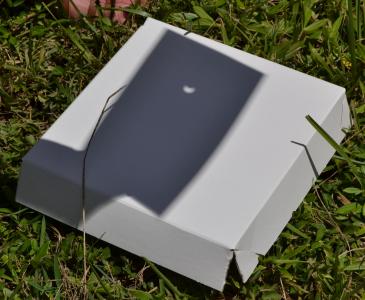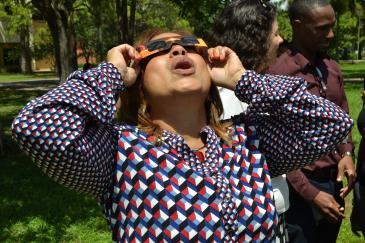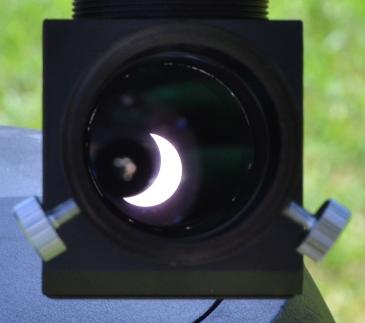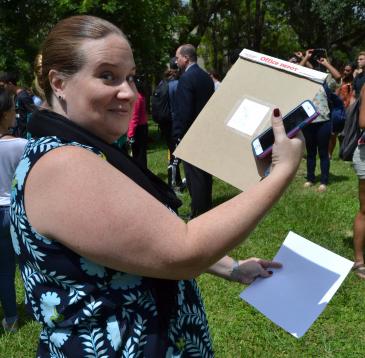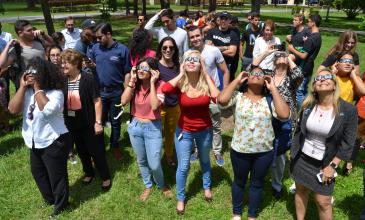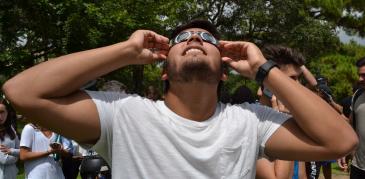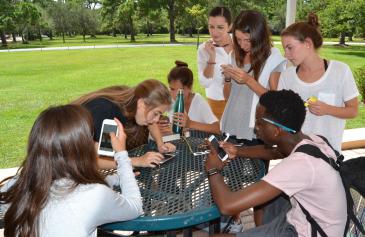By Jim Davis - Florida Catholic
Photography: JIM DAVIS | FC
MIAMI GARDENS | The Great American Eclipse has come and gone; but professors at St. Thomas University worked to give the celestial event lasting value for those who attended a telescope-boosted viewing.
Professor David Quesada, one of the organizers, put it simply.
"I wanted them to enjoy the beauty of science," said Quesada, associate professor of natural science at St. Thomas. "This is a rare event."
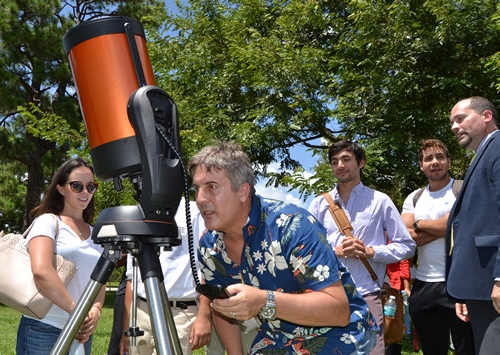
Photographer: Jim Davis
Professor David Quesada resets the telescope to follow the track of the sun as the moon eclipses it.
Dozens of students, staff and faculty at the archdiocesan university, hosted by two science professors, gathered on Aug. 21 to see the once-in-a-lifetime solar eclipse.
They mingled on the campus lawn around a telescope set up by the School of Science. The eight-inch refracting telescope was equipped with a special solar filter, allowing people to view the eclipse without hurting their eyes.
Although Miami was not in the path of totality, the moon did eclipse about 70 percent of the sun.
Melanie Gonzalez, too, wanted to come, even though she's a senior in biology. "I've never seen [an eclipse] before. In the future, I can talk about it to my children."
The eclipse watchers clustered around the burnt-orange telescope as Quesada pushed buttons on a computerized device that resembled a TV controller, which moved the telescope precisely to align with the moving orbs. Those present then peered through an eyepiece to see the cosmic event.
The crowd swelled and ebbed according to class times, peaking at about 70 people. Some brought their own viewing aids: specially designed sunglasses that block out most light except sunlight, allowing them to see the eclipse safely.
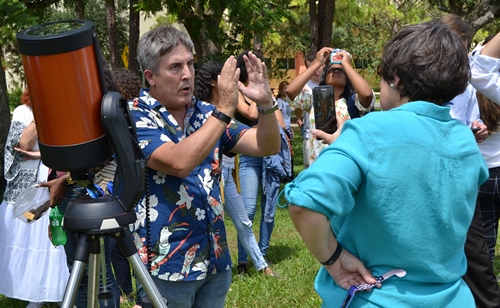
Photographer: Jim Davis
David Quesada, associate professor of natural science at St. Thomas University, explains the eclipse viewing to Ana Rodriguez-Soto, editor of The Florida Catholic.
"Hey, that's really cool!" said Maribel Smith, a staffer at the university, gazing through eclipse glasses. "Looks like the moon at night!"
They chatted and shared ideas for capturing the phenomenon: taking pictures through the telescope lens, placing the solar glasses in front of their cellphones, projecting the image through a pinhole in a paper onto another paper.
Many uploaded their photos to Twitter and other social media. The Florida Catholic provided live coverage, answering readers' questions posted in its Facebook page.
That social facet, in fact, was one of the reasons for the campus viewing, said Professor Luis Fernandez-Torres, one of the organizers.
"Everyone takes pictures of their baby and car and rock concert," said Fernandez-Torres, interim dean of science at St. Thomas. "This [viewing] could inspire kids to go into science."
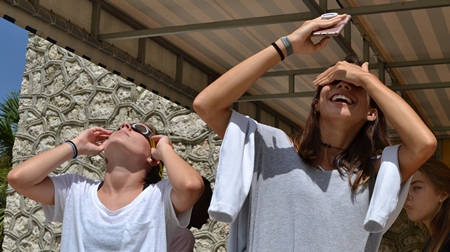
Photographer: Jim Davis
Nursing students Katerina Alvarez, left, and Daniella Piloto gaze sunward during the solar eclipse over St. Thomas University.
He also spelled out more spiritual goals for the gathering. "It can reaffirm how perfect the creation is. The coordination of celestial bodies is so delicate. And we are part of the universe."
A faith connection was also on Professor Jennifer Kryszak's mind that day, as she gave her theology students a list of Bible passages that show God's rule over celestial bodies. The nine passages included Psalm 50:1: "The mighty one, the Lord, speaks and summons the earth from the rising of the sun to its setting."
"I want the students to see the connection between science and everyday life," Kryszak said. "Christianity has always been responding to the context of the world."
Professor Elizabeth Ferrero even invited two dozen of her students from ethics class to the eclipse viewing. "They need to gain the capacity to understand how connected we are to everything in the universe," she said. "Everything in the universe affects us at some level."
Her assistant, Jon-Luc Borno, said he was glad he came. "It's my first eclipse. I never imagined it would be like an orange globe."
How to tell if it was a success? For Quesada, it was the variety of participation.
"Science is one thing many people dismiss as boring," he said. "But the students and faculty and staff witnessed something that they’ve never seen before. That got their attention. That's success."
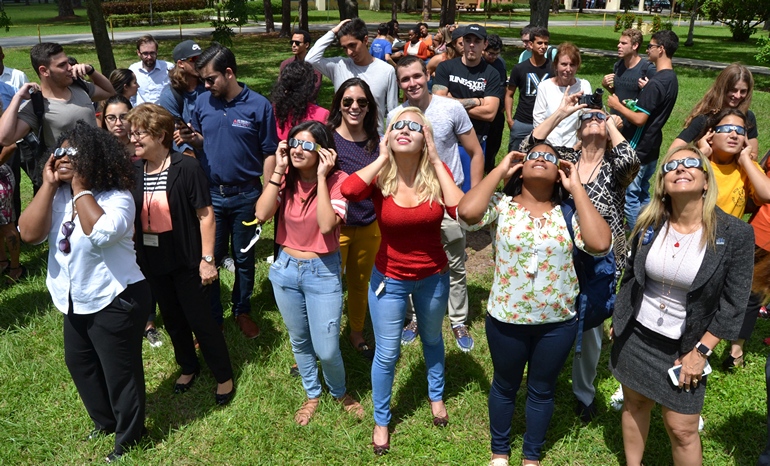
Photographer: Jim Davis
Students, staff and faculty at St. Thomas University gaze at the solar eclipse through special glasses.
